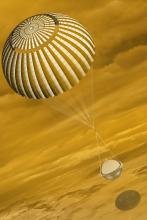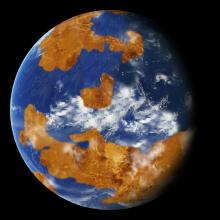Listen to today's episode of StarDate on the web the same day it airs in high-quality streaming audio without any extra ads or announcements. Choose a $8 one-month pass, or listen every day for a year for just $30.
You are here
Moon and Venus
The Moon and the planet Venus — the “morning star” — stage a beautiful encounter tomorrow. They’re low in the sky as twilight waxes. But they’re quite bright, so as long as you have a clear horizon, they’re easy to see.
Venus is completely dry. Even so, it has giant “continents” that tower high above the surrounding plains of volcanic rock. One is called Ishtar Terra. It’s about as big as Australia. And it contains the highest spot on the entire planet: a massive mountain range called the Maxwell Mountains.
The Maxwells tower more than seven miles above “sea level” on Venus — the elevation that geologists use for measuring the height or depth of the planet’s features.
What’s even more impressive is that one side of the Maxwell range is quite steep. The mountains climb four miles over a horizontal distance of just six miles — a slope unlike any seen anywhere else in the solar system.
Because of their elevation, the Maxwells are one of the coolest spots on the planet. The average temperature is more than 700 degrees, but that’s about 150 degrees below average. And the atmospheric pressure is about half of that at lower elevations.
Geologists aren’t sure why the Maxwells are so high. They could be squeezed upward as different sections of Venus’s crust mash together. Or they could be pushed upward as molten rock bubbles toward the surface. Either way, the Maxwell Mountains would be quite a challenge to climb.
Script by Damond Benningfield





